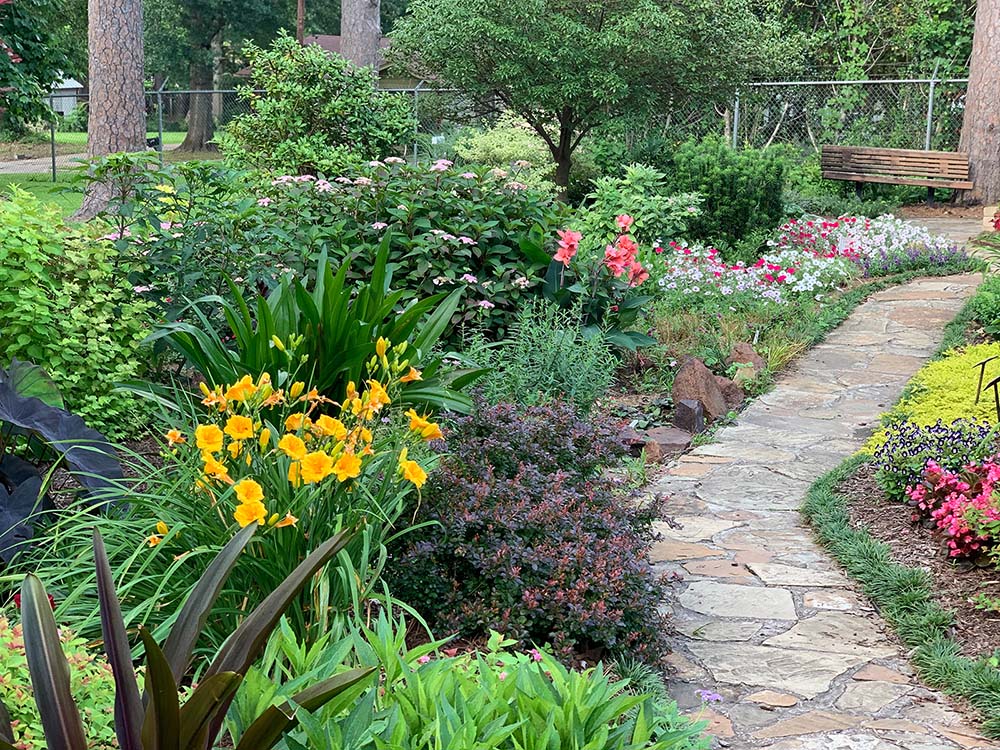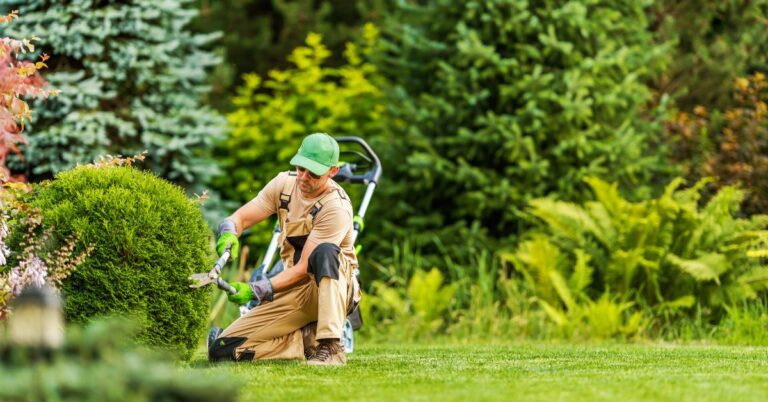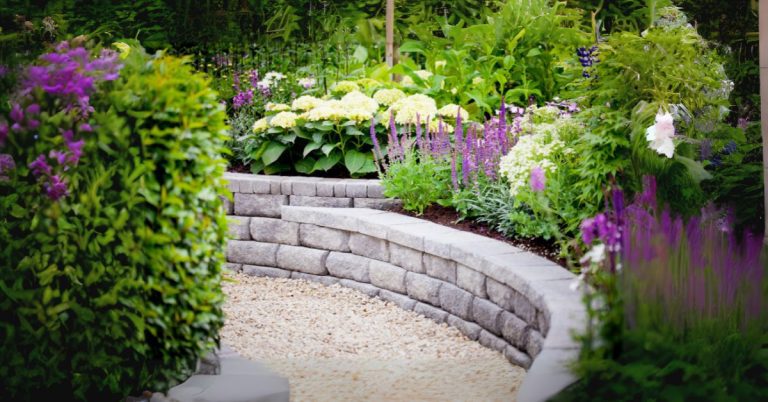Flagstone is a natural stone used for many hardscaping applications. Due to its ability to be quarried into flat slabs, it’s particularly well-suited to patios and walkways. If you’re considering installing flagstone patios or walkways, our deep dive into the pros and cons of this beautiful stone should help answer your questions.
What is Flagstone?
Before selecting flagstone for your hardscaping project, it’s important to understand the material. First and foremost, flagstone is a natural stone. That means it will have variations in color, size, shape, texture, and appearance. This variation is part of its appeal.
Flagstone is a sedimentary stone. That means it was created by layers of sediment hardening over time due to pressure and low heat. Sediment is composed of sand, clay, and other organic particulate matter. Common sedimentary rocks include sandstone and limestone.
The Pros of Flagstone Patios
There are many material options for patios and walkways these days. You’ll want to weigh the pros and cons of each before deciding which to use for your outdoor space.
Flagstone has many qualities that make it an excellent hardscaping material.
Natural Material
As mentioned previously, it’s a natural material. This is important for property owners who want to emphasize a custom or earthy feel in their landscape. Unlike manufactured products, each piece of stone will be unique. This gives rustic flagstone patios visual interest and a more high-end aesthetic.
Unbeatable Durability
Flagstone is also durable. With proper care, this natural stone can last decades if not longer. In fact, there are architectural landmarks and historic buildings that still feature intact flagstone porches and paths centuries later. It holds up to extreme temperature and humidity changes and won’t expand or crack.
Versatility and Ease of Installation
Installing flagstone is also a relatively simple procedure. After the bed has been excavated, leveled, and prepared with crushed rocks and sand, you can lay the flagstones. This is called a dry set. They can also be installed over a concrete patio or a concrete base. This is called mortar set.
Because they are natural and don’t always have uniform edges, you don’t have to follow a specific pattern. Flagstone can be cut to almost any size or shape. This makes it easy to fill in gaps or create unique design ideas.
Low Maintenance
When it comes to maintaining flagstone, the task list couldn’t be simpler. Simply sweeping or hosing off debris keeps it looking great. Mold or mildew can be removed easily with diluted bleach and a stiff brush. For more stubborn stains, scrubbing with a solution of muriatic acid and water will usually help.
Things to Consider When Choosing Flagstone
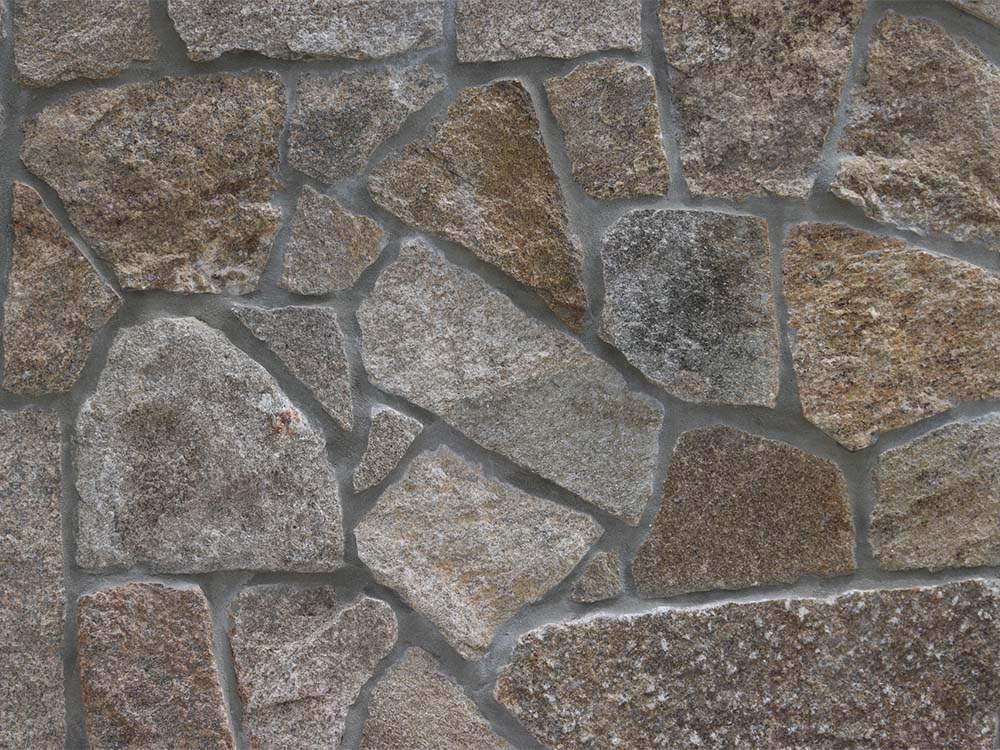
Nothing is perfect, and that includes natural stone. Although the benefits of flagstone far outweigh the drawbacks, there are a few things to consider.
Installation is Labor-Intensive
Despite being relatively simple, flagstone is nonetheless labor-intensive to install. That’s because the stone itself is quite heavy and requires cutting to achieve the desired shape and fit. That extra labor means you’ll probably pay a higher price for professional installation when compared to other materials like poured concrete.
Higher Material Cost
In addition to higher labor costs, you’ll also pay more for the material itself. Flagstone is a natural material that has to be harvested from the earth and is therefore a premium hardscaping product. That means it will be more costly than mass produced pavers.
Slippery When Wet
Like all rocks, flagstones can be slippery when wet, especially when installed on the north side of a structure. Keeping them maintained can help reduce moss and mildew buildup.
Uneven Surface
Due to natural variation in surface texture and thickness, flagstone patios can be uneven if not properly installed. Bed preparation is critical to ensure a level surface that won’t present a tripping hazard. That’s why professional installers often recommend mortar set on a level concrete base.
Should Flagstone Patios Be Sealed?
As for sealing flagstone, there are different schools of thought. Some professionals argue that sealant traps water in the stone, resulting in discoloration and deterioration. This is particularly a concern if the ground beneath the flagstone tends to hold onto moisture, which can leach into the stone. Proper bed preparation can help lessen this problem.
Additionally, a glossy sealer can cause your stones to be slippery.
However, some contractors advise applying sealant to protect against staining and spalling (breaking or fragmenting.) For example, flagstone pool decks are especially susceptible to damage due to the continual exposure to chlorine. Sealant offers a barrier of protection that can help preserve the stone.
If you do apply sealant, pressure wash your flagstone and allow it to dry thoroughly before application. And be sure to use a matte finish. This keeps the natural look of the stone and makes it more slip resistant.
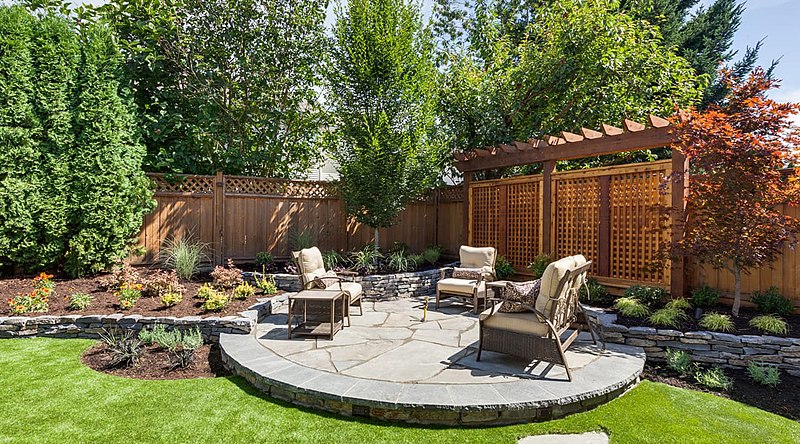
Dry or Mortar Set?
To mortar or not to mortar – that is the question. The answer depends on your specific goals and the look you want to achieve. There are pros and cons to each installation type.
Dry-Set Pros
- Faster and easier installation
- Easy replacement of broken stones
- More natural look
- Can place plant material in joints
Dry-Set Cons
- More prone to shifting
- Periodic need to replace sand/gravel between stones
- Surface may be more uneven
Mortar Pros
- More finished appearance
- You can custom mix grout to match your design aesthetic
- More secure base for high traffic areas
Mortar Cons
- Repairs require a professional mason
- More complicated to install
- Higher upfront labor costs
Looking for Professional Flagstone Installation? Contact Us.
If you’re considering installing flagstone patios, walkways, or other hardscapes, Creech Landscape can help. We have decades of proven experience in landscape design/build projects for some of Atlanta’s most discriminating addresses. To ensure your project is in the best hands possible, contact us today.


